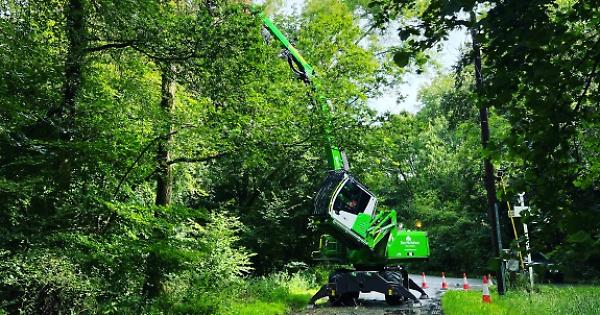ALMOST 200 diseased ash trees are being chopped down.
The felling of more than 60 trees at Ipsden Heath began on Tuesday last week and is due to be completed tomorrow (Wednesday).
The machinery will then be moved to Harpsden and Peveril Woods, where another 120 trees will be cut down over the next four to five weeks.
The trees are affected by ash dieback so need to be felled as they could fall into roads, on to properties or along the permissive footpath next to Henley Golf Club in Harpsden.
Other trees that are far enough away from the boundaries will be left standing to die naturally, creating habitats for wildlife.
The footpath will be closed for the duration of the work, with signs in place. Traffic management is in place on Kit Lane in Ipsden and Woodlands Road in Harpsden. Felling licences have been granted by the Forestry Commission and permission has been granted by Natural England.
The Woodland Trust, which has owned both sites since the Eighties, has employed a contractor to carry out the work after a survey last year showed that the ash trees were heavily affected by the disease.
Ash dieback is caused by a non-native invasive fungus, Hymenoscyphus fraxineus, which blocks the water transport systems within the tree. Affected trees become brittle and the roots rot, making trees liable to drop branches and fall unexpectedly.
James Stevenson, site manager for the Woodland Trust, said the progress of the disease could be seen in affected trees as dead wood starts to form and leaves are lost from its canopy. He said: “Once it reaches over 50 per cent they can shut off and start going downhill quickly. They can become unstable and dangerous. They’re much more fragile than oaks.”
The felling work is being carried out by Ben Nicholson Tree Services, of Ewhurst, Surrey, using a specialist machine.
A spokesman said: “The machine is the safest way to remove diseased ash trees and is specifically designed for this type of work. It allows us to remove large dangerous trees in a controlled manner, ensuring the surrounding trees are left intact. It also allows us to leave ecological features as we have a much higher reach than a conventional excavator.”
Mr Stevenson said the work was being carried out as sensitively as possible to minimise the impact of the work on the woodland.
He said: “It’s not great but we’re doing our best. We keep the machinery in one location and won’t move it into the woodland and we also do climbing. We’re the Woodland Trust, we’re about the protection of trees, so it’s sad for us.
“We’ve carried out bird breeding surveys so if people are concerned we’re disturbing nesting birds that’s not the case. There is an impact but the damage to the ecology is minimal.
“Because the trees are on the boundary we won’t be replacing them. Hopefully. we’ll get a flush of natural regeneration of beech or sycamore or oak.
“Sometimes they sit a couple of feet high until the light reaches the ground and then there’s a huge rush of growth. The large canopy trees will broaden their crowns, they won’t be all crowded in.”
Ash is the third most common native tree in the UK. According to the trust, more than 80 per cent of the UK’s ash trees will succumb to the disease, presenting a threat to the our treescape on a scale not seen since the Dutch elm disease epidemic of the Seventies.
www.henleystandard.co.uk
http://www.henleystandard.co.uk/news/harpsden/182428/200-trees-being-felled-due-to-ash-dieback-disease.html














